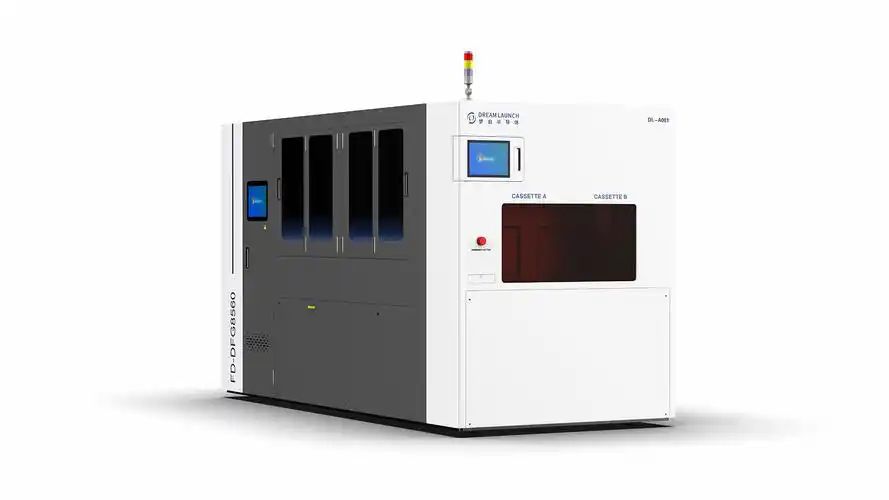Semiconductor Wafer Grinding Equipment Market: Trends Shaping Chip Futures
Friday,28 Mar,2025
The Semiconductor Wafer Grinding Equipment Market is surging in 2025, fueled by an unrelenting push for smaller, more efficient semiconductor chips powering everything from smartphones to electric vehicles (EVs). These machines, vital for thinning wafers to exacting specifications, are at the heart of chip fabrication, with the market valued at roughly $2.4 billion in 2023 and projected to hit $4.5 billion by 2032 at a CAGR of 7.1%. Innovations in grinding technology—like diamond wheels and automated systems—are driving this growth, meeting the precision needs of a tech-hungry world. Yet, as the market accelerates, it faces friction—rising raw material costs, environmental mandates, and competition from etching alternatives threaten its trajectory, making it a space ripe for both progress and contention.
What fuels this market’s momentum is its role in enabling miniaturization. Wafers as thin as 50 microns are now standard, driven by demand for compact devices—global smartphone sales alone topped 1.4 billion units in 2024. The Semiconductor Wafer Grinding Equipment Market shines in Asia Pacific, where China, Japan, and South Korea churn out over 60% of the world’s chips, but North America holds firm with its focus on cutting-edge applications like AI and EVs.

Grinding technology is the backbone of this market’s evolution, with 2025 showcasing leaps that redefine wafer processing. Diamond grinding wheels, offering 20% higher precision than traditional abrasives, are slashing surface roughness to below 1 nanometer—critical for 5G chips and advanced nodes like 3nm. Automated systems with IoT integration are boosting throughput by 15%, enabling real-time adjustments in high-volume fabs. Meanwhile, eco-friendly innovations—like water-based coolants and energy-efficient motors—are cutting power use by 10%, aligning with sustainability goals like the EU’s net-zero targets and appealing to green-conscious manufacturers.
But these advances aren’t seamless. The high cost of next-gen grinding technology—sometimes doubling equipment prices—puts smaller foundries at a disadvantage, raising questions about market equity. Scaling eco-friendly solutions lags, too, as diamond wheel production strains supply chains. This push-pull could spark debates: Is the Semiconductor Wafer Grinding Equipment Market racing toward a sustainable future, or entrenching a high-cost elite? Expect this tension to ripple through industry forums and social media as stakeholders weigh innovation against inclusion.
The Semiconductor Wafer Grinding Equipment Market is a hotbed of trending issues primed for engagement. The 5G rollout—connecting 2.5 billion devices by 2024—drives demand for ultra-thin wafers, but supply chains buckle under semiconductor shortages. Sustainability is another flashpoint—regulations demand lower emissions, yet grinding’s energy intensity (up to 50 kWh per batch) clashes with green goals, pushing for recyclable abrasives. Automation’s rise, tied to Industry 4.0, promises efficiency but threatens jobs in labor-heavy regions like Southeast Asia, fueling ethical debates.
Industry pain points add urgency. Raw material volatility—silicon prices jumped 8% in 2024—squeezes margins, while a skilled technician shortage (down 12% in the U.S. since 2022) slows adoption of high-tech gear. Potential tariffs on equipment imports could hike costs further, a frustration echoed online. These dynamics position the Semiconductor Wafer Grinding Equipment Market as a crucible for 2025, blending practical hurdles with policy questions that could dominate trade talks and digital chatter.
The Semiconductor Wafer Grinding Equipment Market is at a tipping point, with its future tied to precision and pragmatism. Scaling grinding technology—think affordable automation and green abrasives—could unlock growth in emerging hubs like India, where chip demand rose 10% in 2024. Topics like AI-driven grinding optimization, sustainable supply chains, and workforce reskilling could fuel hot articles and policy shifts. In my view, the market’s strength lies in its ability to democratize precision—its promise risks dulling if it caters only to deep-pocketed giants.
This isn’t just about thinning wafers—it’s about sharpening tech’s future. The Semiconductor Wafer Grinding Equipment Market in 2025 is poised to underpin the chips driving our connected world, but it must grind through a maze of costs and conscience. As it hones its edge, expect this sector to keep the industry buzzing.
A1: Growth is driven by demand for thinner wafers in 5G, EVs, and consumer electronics, fueled by advancements in grinding technology.
A2: Diamond wheels and automation enhance precision and efficiency, though high costs can limit access for smaller players.
A3: Raw material volatility, technician shortages, and supply chain delays raise costs and slow adoption.
A4: Yes, sustainability pressures and automation’s job impact could spark debates over eco-goals versus employment.
A5: AI optimization, green abrasives, and supply chain resilience could dominate industry and policy discussions.
What fuels this market’s momentum is its role in enabling miniaturization. Wafers as thin as 50 microns are now standard, driven by demand for compact devices—global smartphone sales alone topped 1.4 billion units in 2024. The Semiconductor Wafer Grinding Equipment Market shines in Asia Pacific, where China, Japan, and South Korea churn out over 60% of the world’s chips, but North America holds firm with its focus on cutting-edge applications like AI and EVs.
Grinding technology is the backbone of this market’s evolution, with 2025 showcasing leaps that redefine wafer processing. Diamond grinding wheels, offering 20% higher precision than traditional abrasives, are slashing surface roughness to below 1 nanometer—critical for 5G chips and advanced nodes like 3nm. Automated systems with IoT integration are boosting throughput by 15%, enabling real-time adjustments in high-volume fabs. Meanwhile, eco-friendly innovations—like water-based coolants and energy-efficient motors—are cutting power use by 10%, aligning with sustainability goals like the EU’s net-zero targets and appealing to green-conscious manufacturers.
But these advances aren’t seamless. The high cost of next-gen grinding technology—sometimes doubling equipment prices—puts smaller foundries at a disadvantage, raising questions about market equity. Scaling eco-friendly solutions lags, too, as diamond wheel production strains supply chains. This push-pull could spark debates: Is the Semiconductor Wafer Grinding Equipment Market racing toward a sustainable future, or entrenching a high-cost elite? Expect this tension to ripple through industry forums and social media as stakeholders weigh innovation against inclusion.
The Semiconductor Wafer Grinding Equipment Market is a hotbed of trending issues primed for engagement. The 5G rollout—connecting 2.5 billion devices by 2024—drives demand for ultra-thin wafers, but supply chains buckle under semiconductor shortages. Sustainability is another flashpoint—regulations demand lower emissions, yet grinding’s energy intensity (up to 50 kWh per batch) clashes with green goals, pushing for recyclable abrasives. Automation’s rise, tied to Industry 4.0, promises efficiency but threatens jobs in labor-heavy regions like Southeast Asia, fueling ethical debates.
Industry pain points add urgency. Raw material volatility—silicon prices jumped 8% in 2024—squeezes margins, while a skilled technician shortage (down 12% in the U.S. since 2022) slows adoption of high-tech gear. Potential tariffs on equipment imports could hike costs further, a frustration echoed online. These dynamics position the Semiconductor Wafer Grinding Equipment Market as a crucible for 2025, blending practical hurdles with policy questions that could dominate trade talks and digital chatter.
The Semiconductor Wafer Grinding Equipment Market is at a tipping point, with its future tied to precision and pragmatism. Scaling grinding technology—think affordable automation and green abrasives—could unlock growth in emerging hubs like India, where chip demand rose 10% in 2024. Topics like AI-driven grinding optimization, sustainable supply chains, and workforce reskilling could fuel hot articles and policy shifts. In my view, the market’s strength lies in its ability to democratize precision—its promise risks dulling if it caters only to deep-pocketed giants.
This isn’t just about thinning wafers—it’s about sharpening tech’s future. The Semiconductor Wafer Grinding Equipment Market in 2025 is poised to underpin the chips driving our connected world, but it must grind through a maze of costs and conscience. As it hones its edge, expect this sector to keep the industry buzzing.
FAQS
Q1: What’s propelling the Semiconductor Wafer Grinding Equipment Market in 2025?
A1: Growth is driven by demand for thinner wafers in 5G, EVs, and consumer electronics, fueled by advancements in grinding technology.
Q2: How does grinding technology shape this market?
A2: Diamond wheels and automation enhance precision and efficiency, though high costs can limit access for smaller players.
Q3: What challenges do manufacturers face in this market?
A3: Raw material volatility, technician shortages, and supply chain delays raise costs and slow adoption.
Q4: Are there controversial trends impacting the market?
A4: Yes, sustainability pressures and automation’s job impact could spark debates over eco-goals versus employment.
Q5: What future topics might drive engagement?
A5: AI optimization, green abrasives, and supply chain resilience could dominate industry and policy discussions.

